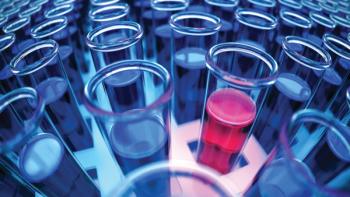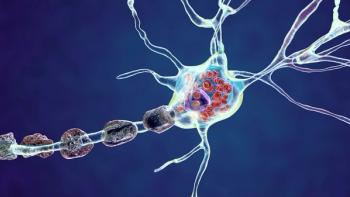
- Pharmaceutical Technology, February 2024
- Volume 48
- Issue 2
- Pages: 32–33
Addressing PK/PD Study Design Early in Development
Strategizing a PK/PD study approach in early phase development facilitates a successful clinical progression.
The current trend in biopharmaceutical development is to place more thorough emphasis on molecule characterization early in the drug development process. Thus, pharmacokinetic (PK) and pharmacodynamic (PD) studies developed during preclinical development are crucial.
Being able to characterize the relationship between PK (i.e., how the body interacts with a therapeutic/drug over the duration of exposure to that substance) and pharmacodynamics (i.e., dose effects) is considered an important tool in the drug discovery and development process. Implementing PK/PD studies in the early phases of drug discovery projects facilitates a successful transition from the discovery phase to the development phase (1).
Importantly, establishing an effective PK/PD study design, analysis, and interpretation allows scientists to:
- illuminate the relationship between PK and PD
- elevate the understanding of a drug’s mechanism of action (MOA)
- identify PK properties for further improvement and optimal compound design (1).
Meanwhile, using a PK/PD modeling approach can increase translation of a compound’s in-vitro potency to its potency in vivo. Modeling also reduces the number of in-vivo animal studies and improves the transition of study results from the preclinical setting to the clinical setting. In fact, it is the effective translation of preclinical data that is critical for developing the design of appropriate and successful clinical trials (1).
Having a sound understanding of a lead compound’s PK/PD relationship provides a PK basis for what to expect in the therapeutic index of that compound. Having this understanding also aids in the design of proper dose regimens for proof-of-concept studies in the clinical development phases. Important factors to consider for maximizing the use of a rigorous PK/PD analysis include establishing a dataset that adequately captures the following profiles: concentration vs. time and effect vs. time. Furthermore, the following should be incorporated in the PK/PD model:
- a fundamental understanding of the biological pathway being agitated
- a consideration of unbound concentrations
- sound statistical and mathematical output.
Large molecule bioanalysis
The bioanalysis of large-molecule therapeutics (e.g., peptides, proteins, monoclonal antibodies, antibody drug conjugates) is typically conducted in a biological matrix, typically serum or plasma (2). Bioanalysis of large molecules is often performed using ligand binding assays such as enzyme-linked immunosorbent assay (ELISA) or electrochemiluminescence (ECL), or, in some cases, hybrid liquid chromatography-tandem mass spectrometry methods (3). It is important to keep in mind that PK profiles of large-molecule therapeutics differ significantly from small molecules based on the absorption, distribution, metabolism, and excretion of large molecules compared to small molecules. Such differences will affect the PK profile of a large-molecule therapeutic (3).
Modeling approach. Dosing requirements for new large-molecule therapeutics should be assessed early; this early assessment must, therefore, be an integral component of the developability strategy of a drug discovery program. For instance, with early dosing requirement assessments, a developer can evaluate whether an extremely high dose is needed to achieve the targeted pharmacological effect. If so, the developer may consider that it is not feasible to advance a potential candidate to clinical or even commercial stages of development without also developing a high-concentration formulation or else maximizing yield in the manufacturing process (4). The use of mechanistic PK/PD models, therefore, come into play, which use knowledge and available competitor data at the early stage of drug development—including the biophysics of the intended target(s) as well as the physiology of the disease—to rationally inform the drug design criteria (4).
According to Grant et al., “[m]echanistic PK/PD modeling links PK to PD through a biophysical description of the therapeutic MOA and relevant target biology” (4). The paper goes on to describe that, with a mathematical description of these key MOAs, mechanistic PK/PD models can then be used to support decisions across the drug discovery and development pipeline.
Mechanistic PK/PD modeling can also be applied to decisions in later stages of drug development. To support later-stage drug development and clinical-stage decisions, mechanistic PK/PD models are dependent on the integration of data from in-vitro and in-vivo preclinical studies as well as data from clinical PK studies, biomarker evaluation, and response studies. “This approach has improved extrapolation capabilities to predict drug efficacy and safety in humans compared to empirical PK/PD modeling; therefore, it is also commonly used in translational research,” according to Grant et al.
Thus, mechanistic PK/PD modeling has been shown to successfully guide early drug discovery decisions. This approach allows researchers to define a range of drug properties that are expected to achieve the most robust response with respect to receptor occupancy and/or target engagement. Moreover, mathematical modeling can enable early no-go decisions and facilitates the integration of development considerations into the decision-making process early on that then reduces risk in later stages of the development process. Importantly, mechanistic PK/PD models can be applied to recombinant proteins and peptides, in addition to antibody therapeutics, which is an important factor when working with novel biotherapeutic modalities or with biomolecules that are not yet well understood (4).
Application in drug delivery
Early considerations in the drug development process also include how the potential or selected candidate will be delivered in vivo to achieve the desired therapeutic effect. As such, PK/PD studies can also be applied to large molecule drug delivery, and strategizing a formulation and drug delivery method needs to be factored in during the early development phase. The advancement of technologies in the biopharma industry has led to the development of increasingly complex biomolecules and more sophisticated drug delivery systems. This has also led to increasingly complex drug absorption and disposition processes following administration with these drug delivery systems (5).
Because PK/PD modeling allows for the separation of drug, carrier, and pharmacological system-specific parameters, it has been used to improve the understanding of the in-vivo behavior of these complex delivery systems. Thus, PK/PD modeling helps in the development such drug delivery systems.
However, while PK/PD modeling has been helpful in advancing drug development, it poses several challenges. For instance, assumptions used to simplify the drug delivery process so as to plug into the PK/PD model may not be appropriate for the molecule of the delivery system at hand. To start with, any assumptions used must be reliable, and this requires a detailed understanding of the physiological system and drug delivery system at play. Lacking the relevant information makes it difficult to validate the assumptions at the start (5).
Modeling assumptions are typically based on prior knowledge and experience, and thus having assumptions helps to fill missing pieces in existing information as well as simplifies the understanding of a complex system. Modelers should take heed and acknowledge, however, the limitations of the model. Moreover, development of PK/PD models should be fit-for-purpose.
Extrapolation from animal studies to human studies based on PK/PD modeling is another challenge, particularly when it comes to scaling. Some approaches that have been considered to minimize errors with scaling include (5):
- Selecting the appropriate animal species for scaling to humans
- Employing allometric scaling using multiple species (to both minimize the error and increase the accuracy of prediction)
- Where, for some pharmacological systems, the scaling method from animal to human has already been established, use available prior information.
References
1. Tuntland, T.; Ethell, B.; Kosaka T.; et al. Implementation of Pharmacokinetic and Pharmacodynamic Strategies in Early Research Phases of Drug Discovery and Development at Novartis Institute of Biomedical Research. Front Pharmacol. 2014, 5, 174. DOI: 10.3389/fphar.2014.00174
2. Pacific BioLabs. Large Molecule Bioanalysis. pacificbiolabs.com/large-molecule-bioanalysis (accessed Jan. 15, 2024).
3. Medpace. PK Studies. medpace.com/labs/bioanalytical-lab/pk-studies (accessed Jan. 15, 2024).
4. Grant, J.; Hua, F.; Apgar, J. F.; Burke, J. M.; Marcantonio, D. H. Mechanistic PK/PD Modeling to Address Early-Stage Biotherapeutic Dosing Feasibility Questions. mAbs 2023, 15 (1), 2192251. DOI: 10.1080/19420862.2023.2192251
5. Zou, H.; Banerjee, P.; Leung, S. S. Y.; Yan, X. Application of Pharmacokinetic-Pharmacodynamic Modeling in Drug Delivery: Development and Challenges. Front. Pharmacol. 2020, 11. DOI: 10.3389/fphar.2020.00997.
About the author
Feliza Mirasol is the science editor for Pharmaceutical Technology.
Article details
Pharmaceutical Technology
Volume 48, No. 2
February 2024
Pages 32–33
Citation
When referring to this article, please cite it as Mirasol, F.Addressing PK/PD Study Design Early in Development. Pharmaceutical Technology 2024, 48 (2), 32–33.
Articles in this issue
almost 2 years ago
European Medicines Agency Viewpointalmost 2 years ago
Emerging Therapies Drive Analytical Advancementsalmost 2 years ago
QbD for Small-Molecule Continuous Process Developmentalmost 2 years ago
Compounding Overview: Primary Considerations for the Workplacealmost 2 years ago
Analyzing Exabytesalmost 2 years ago
MHRA’s New International Recognition Procedurealmost 2 years ago
On the Up and Upalmost 2 years ago
J.P. Morgan Losing Weightalmost 2 years ago
Computer Validation Confirms EvidenceNewsletter
Get the essential updates shaping the future of pharma manufacturing and compliance—subscribe today to Pharmaceutical Technology and never miss a breakthrough.




